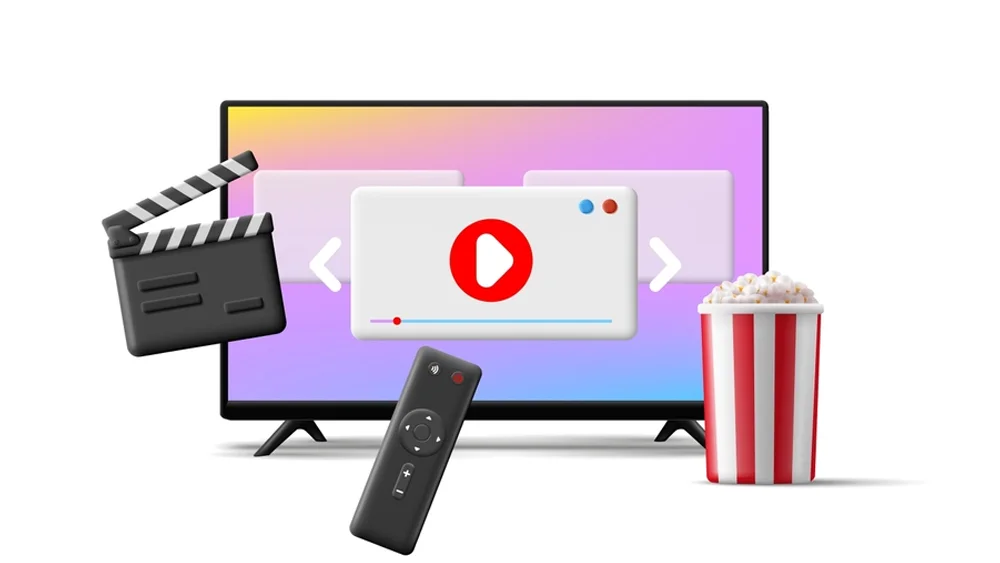Entertainment facilities at home have been developed in recent years. It is an interesting evolution from families costing a small TV set and sitting together to watch something collectively to advanced smart homes where a family has many devices connected in a perfect manner that could be used to consume entertainment media. This evolution however is not about ‘better technology’ or ‘more content’ but about ‘Internet-TV-Phone’ as a fluid and seamless service.’ This paper aims to highlight the advancements that have taken place in home entertainment, specifically utilizing the bundled services and their impact on society.
The Evolution of Home Entertainment: The Early Days of Home Entertainment
In the beginning, home entertainment was a straightforward affair. Televisions were bulky, programming was limited, and telephones were tethered to the wall. Internet service, when it first became available, was slow and unreliable. Each of these services Internet, TV, and phone operated independently, often from different providers. Managing multiple bills, dealing with various customer service departments, and troubleshooting issues across different platforms were common challenges for households.
Technological advancements slowly began to change this landscape. The introduction of broadband Internet brought faster speeds and more reliable connections. Digital TV offered clearer pictures and more channels, while Voice over Internet Protocol (VoIP) emerged as an innovative way to make phone calls over the Internet. These developments laid the foundation for the next big shift in home entertainment: the rise of bundled services.
The Rise of Bundled Services
As technology advanced, service providers started offering bundled packages that combined Internet, TV, and phone services. This shift was a game-changer for consumers, providing them with convenience, cost savings, and an enhanced user experience.
The Evolution of Home Entertainment: The Introduction of Bundled Packages
In the early 2000s, the concept of bundling services began to take off. Providers recognized that customers were looking for more streamlined solutions, and bundling became a way to meet this demand. By offering multiple services in one package, companies could attract new customers and retain existing ones by providing a more comprehensive and cohesive experience.
The Benefits of Bundled Services
Among the pros of service bunding one of the significant issues is the opportunity to have all necessary services in one place. Many of the customers did not have to struggle between managing multiple bills at home or dealing with different companies’ customer service departments. In the case of having one account representative who was solely responsible for the particular account, handling of accounts, reporting issues, and modification of service plans was more convenient.
Another profound advantage that was changed was that of the cost-saving aspect. Providers that provided bundled Internet, TV, and phone services provided cheaper prices to the customers. This made everything much cheaper and much easier for families to acquire all the services that they required. Moreover, these bundles were normally accompanied by other options such as higher internet speed, more TV channels, and free phone calls among others thus adding more value to the consumers.
Apart from convenience and costs, integrated services provide a more enhanced experience to the consumers. It also had implications for the customers as they could get exceptional services such as being able to stream TV via the internet, availing of VoIP services to be able to make clear and reliable phone calls, and all these on a single app or a single platform. At this level of integration, it was said that consumers could achieve a seamless and congruent home entertainment experience.
The Evolution of Home Entertainment: The Role of Integrated Services
The way we consume entertainment today is vastly different from just a decade ago. The rise of streaming services, the proliferation of smart home technology, and the increasing demand for high-speed Internet have all contributed to the evolution of home entertainment. In this modern landscape, the role of integrated services has become even more critical.
Current Trends in Home Entertainment
Today’s consumers expect a seamless, connected experience across all their devices. Streaming services like Netflix, Hulu, and Disney+ have changed the way we watch TV, while smart home devices allow us to control everything from lighting to security systems with a simple voice command. High-speed Internet is no longer a luxury but a necessity, as it powers all these devices and services.
As a result, service providers have had to adapt to these changing demands. Companies like westman communications have recognized the importance of offering fully integrated systems that meet the needs of modern consumers. These systems provide a unified user interface where customers can access all their services from a single platform or app. Whether streaming a movie, making a phone call, or checking emails, everything is connected and easily accessible.
Advantages of Fully Integrated Systems
One of the key advantages of fully integrated systems is the ability to customize service packages to meet individual or family needs. Customers can choose the Internet speed, TV channels, and phone features that best suit their lifestyle, ensuring they get the most value for their money. Additionally, these systems often include enhanced features like cloud storage, remote access, and integration with smart home devices, further enhancing the overall experience.
However, it’s essential to be aware of potential challenges, such as reliance on a single provider. While bundling services offers many benefits, it also means that if there is a service outage, it could affect all aspects of home entertainment. Therefore, customers must choose a reliable provider that offers excellent customer support and a strong network infrastructure.
The Future of Home Entertainment
As technology continues to evolve, so too will the way we experience home entertainment. Emerging technologies like 5G, AI-driven content recommendations, and even more personalized service bundles are on the horizon. These advancements will likely continue to shape the future of home entertainment, offering even more convenience, customization, and connectivity.
Predictions for Future Trends
With the rollout of 5G networks, we can expect even faster Internet speeds and more reliable connections. This will enable more advanced streaming services, improved smart home functionality, and new ways to interact with entertainment content. AI-driven content recommendations will make it easier for consumers to discover new shows, movies, and music based on their preferences, further personalizing the entertainment experience.
The Ongoing Evolution
As these trends continue to develop, service providers will need to stay ahead of the curve by offering innovative solutions that meet the needs of modern consumers. Flexibility, customization, and a focus on customer satisfaction will be key to maintaining a competitive edge in the ever-evolving home entertainment landscape.
Conclusion
The evolution of home entertainment from standalone services to integrated bundles has significantly impacted how we consume content and stay connected. By choosing the right service package, consumers can enjoy a seamless, connected experience that enhances their daily lives. As technology continues to advance, the future of home entertainment looks bright, with even more opportunities for innovation and personalization on the horizon.





